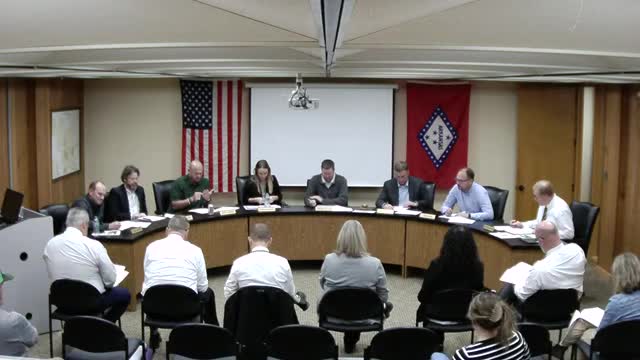School District Faces Bus Fleet Crisis Amid Rising Costs
November 01, 2024 | ALMA SCHOOL DISTRICT, School Districts, Arkansas
This article was created by AI summarizing key points discussed. AI makes mistakes, so for full details and context, please refer to the video of the full meeting. Please report any errors so we can fix them. Report an error »

During a recent government meeting, officials discussed the pressing issues surrounding the aging bus fleet, particularly focusing on the motor coaches used for school activities. The conversation highlighted the challenges of maintaining an outdated fleet, with many buses dating back to the 1980s and 1990s, leading to increased repair costs and difficulties in sourcing parts.
The discussion began with a review of the current status of the bus fleet, revealing a significant reduction in the number of operational motor coaches. Officials noted that while there are ten motor coaches remaining, the reliability of these vehicles is in question, with some already out of service due to repair issues. The age of the fleet has raised concerns about safety and efficiency, prompting discussions about potential replacements or alternatives, such as transitioning to smaller activity buses.
One official pointed out that the current fleet often struggles to accommodate trips with low student turnout, suggesting that smaller buses could be more appropriate for certain activities. However, the cost of new buses remains a significant barrier, with estimates for new activity buses reaching up to $200,000. The officials also explored leasing options as a potential solution to manage costs while ensuring adequate transportation for students.
The conversation further delved into the financial implications of maintaining the fleet, with officials noting that the costs associated with repairs and upkeep are becoming unsustainable. The discussion included the possibility of implementing a long-term bus purchasing plan to gradually replace aging vehicles and ensure a reliable fleet for the future.
In conclusion, the meeting underscored the urgent need for a strategic approach to address the challenges posed by the aging bus fleet, balancing financial constraints with the necessity of providing safe and reliable transportation for students. The officials agreed to continue exploring options and gathering more information to inform future decisions regarding the fleet's management and potential upgrades.
The discussion began with a review of the current status of the bus fleet, revealing a significant reduction in the number of operational motor coaches. Officials noted that while there are ten motor coaches remaining, the reliability of these vehicles is in question, with some already out of service due to repair issues. The age of the fleet has raised concerns about safety and efficiency, prompting discussions about potential replacements or alternatives, such as transitioning to smaller activity buses.
One official pointed out that the current fleet often struggles to accommodate trips with low student turnout, suggesting that smaller buses could be more appropriate for certain activities. However, the cost of new buses remains a significant barrier, with estimates for new activity buses reaching up to $200,000. The officials also explored leasing options as a potential solution to manage costs while ensuring adequate transportation for students.
The conversation further delved into the financial implications of maintaining the fleet, with officials noting that the costs associated with repairs and upkeep are becoming unsustainable. The discussion included the possibility of implementing a long-term bus purchasing plan to gradually replace aging vehicles and ensure a reliable fleet for the future.
In conclusion, the meeting underscored the urgent need for a strategic approach to address the challenges posed by the aging bus fleet, balancing financial constraints with the necessity of providing safe and reliable transportation for students. The officials agreed to continue exploring options and gathering more information to inform future decisions regarding the fleet's management and potential upgrades.
View full meeting
This article is based on a recent meeting—watch the full video and explore the complete transcript for deeper insights into the discussion.
View full meeting
